
In the twelve years I have taught the documentary studies and cultural anthropology seminar “Our Culinary Cultures” (DocSt 344S/CulAnth 285S), the course has morphed from focusing on the ways in which food holds and sustains communities throughout history and across the globe into a class that dwells on the ways in which food can be an incredibly divisive material, as the role of restaurants in the #MeToo movement recently showed us all.
However, I have never taught in a semester like this one—including the one in which I gave birth during reading week.
When the global COVID-19 crisis hit campus, I again reconsidered the power of food. This seminar involves intense discussions best conducted in person, so students can interpret their readings on food politics collectively. How could I sustain the community of our class now? The new plan: In lieu of our discussions, students would build an online archive called “Food in the Time of COVID-19.”
Each student would document an emergent form of self-care for this new era among American college students by chronicling one dish each week they prepared wherever they were sheltering. The dish was to be accompanied by a write-up describing: why the food was chosen (including factors such as cost, availability of ingredients, and accessibility of tools and equipment); when and with whom it was consumed; and, finally, a photograph. The goal: An autoethnographic account of food as a material form of coping with a destabilizing present. To facilitate open and honest participation, I, too, submitted weekly entries.
The goal: An autoethnographic account of food as a material form of coping with a destabilizing present.
As you will read, these students opened their hearts and minds to cooking and eating “apart together.” Their work explores a new expression of the concept of commensality, or the bonds that develop according to the social custom of eating together with other people, a topic which has interested anthropologists since the dawn of the discipline. It also shows that self-care can come in the form of a single packet of instant grits or a peanut butter and jelly sandwich as much as it can from a homemade apple pie. Fried rice and hummus emerged as favorite comfort foods. The best discovery was the way in which the students used their entries to “talk” to one another across space and time. I invite you to visit our struggles (and our humor) amid this range of cross-cultural culinary experiences we put together for ourselves—and, now, for you.
Ph.D., Cultural Anthropology
Visiting Lecturer, Center for Documentary Studies
Instructor, Our Culinary Cultures




This week, I thought to myself, “Oh I should make a really fancy and pretty bread, that would be cool.” I even had the recipe for Lemon Turmeric Cake picked out along with a recipe for candied lemons. Then, this week started. Oh, my goodness, how is there this much to do and only 22 days left to my entire undergraduate career.
So, my “Food in the Time of Quarantine” this week is going to be a more honest depiction of how I really eat…not that fancy, curated image that says “I am cool and I bake like a boss”…because cool people bake.




What?! Are those Boca Burgers! Omg!
I grab them like I’m a contestant on Guy Fieri’s Guy’s Grocery Games, race home, and whip out my skillet. I heat up a little olive oil and let one Boca patty sizzle for eight minutes while flipping it every few minutes. With two minutes remaining, I dollop on the spicy red sauce, sprinkle mozzarella, and cover with the pan with a lid to let the cheese melt (as you can see in the picture, it didn’t melt so thoroughly). I shimmy the patty and its Italian inspired toppings onto a sesame bun. Obviously, I snap a picture and send it to my mom, dad, and brother with the caption, “They’re unbelievable” (I had already taken a bite at this point). Mom replies with a picture of three Boca boxes in the freezer at home—“Well stocked!”




My parents tend to avoid the food I make.
Citing the blandness, I have only seen them eat my concoctions after drowning them with salt and pepper. To be fair, compared to complex flavors in goat curry, most foods appear bland. As a result, my parents, for years, have stuck to their preferred staples, continuing to eat rice (sometimes chapati) and curry day after day, year after year.
I cannot eat rice and curry every. damned. day.
So, this coronavirus season, I’ve had to become more familiar with cooking for myself.



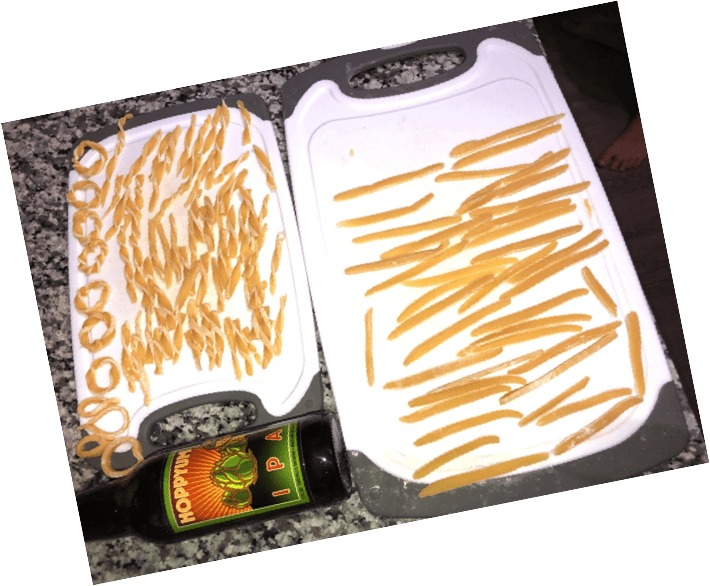
I love NYT Cooking recipes. They’re creative, intricate, straightforward. I read all their newsletters. I’ve placed so much faith and trust in their descriptive steps towards deliciousness.
But then I was led astray.
The other day, I decided to make chocolate peanut butter cookies from a NYT recipe. Halfway through the process, I decided to take a peek at the reviews. They were disastrous, with nearly all of the “most helpful” reviews standing out with words such as “useless,” “waste of time,” and “disappointing.” My faith in NYT was demolished. So, for my next cooking adventure, I decided to explore other platforms.




As a carb-obsessed American, I quite enjoy bastardizing Italian cuisine. Nothing epitomizes this more than a little creation I call “the spaghetti sandwich.”
It’s as simple as it sounds. Take bread—any kind will do—add spaghetti, sprinkle on parmesan cheese, and consume. Carb-on-carb perfection that would no doubt horrify any Italian food purist.
I only get to have this meal a few times a year. My dad is not a spaghetti fan, so when hunting season rolls around and he spends days camping in the woods, my mom and I dive for the pasta and tomato sauce.
Now is one of those rare times. Even in a pandemic, the world stops for turkey season. My dad left for the woods and the turkeys and my mom and I knew it was time.



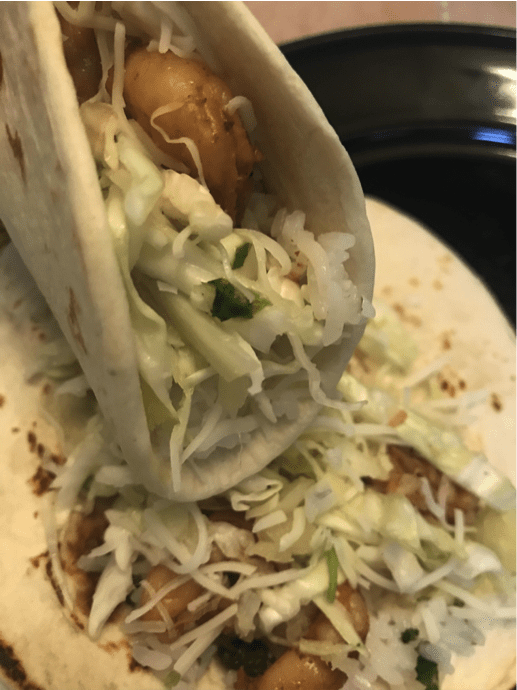
I was spoiled for choice this week. I made my favorite cookies from scratch, helped my mom with lasagna, made pesto chicken pasta, and my favorite of the week—resurrection rolls with my sister, Amaya, for her school’s Zoom Easter Service.
There was one caveat to all this cooking. Something went wrong every time. Not to say I’m not to blame in this mess, but I’m not to blame.
This week has reinforced my distaste for poorly worded recipes, especially those from my mother that literally say, “feel the spices.”


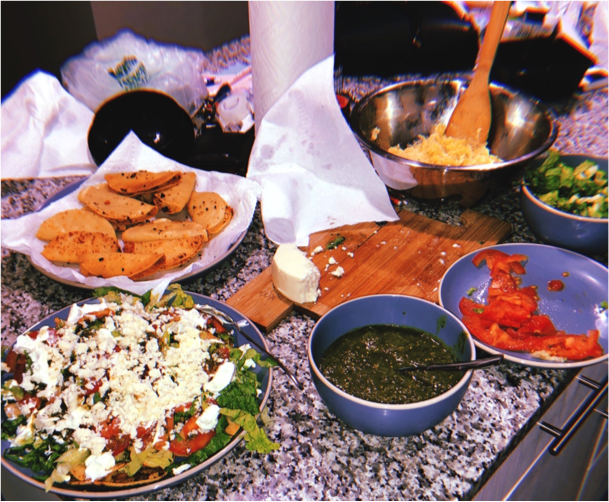

It’s my birthday today and I’m turning twenty-two. If you would’ve asked me at the beginning of the month what I was going to do, I would’ve said rent the drinking trolley in Durham and thrown one hell of a party. But the last day of the month has come and in just thirty days, everything has changed.
Thankfully, I have amazing friends around me who have known about my sad birthday thoughts and have encouraged me to do small things that make me happy. Some of those things include my mom’s green chili spaghetti.
I’m not sure when this dish became one of her most famous but I do know that since I was a little girl it’s been my favorite too. The dish itself is very simple. It calls for pasta, roasted green chilies, prosciutto, mozzarella, and sauce all layered up and baked in the oven. The sauce is what gives it its special taste and without revealing too much of what goes in it… it has parsley, green onions, cilantro, four types of chilies and some other green secrets. . .
I decided to make it for my birthday and my two roommates enjoyed it with me. . . All in all, despite being in quarantine, I got to eat my favorite meal and be with my favorite people so I think that’s worth celebrating.
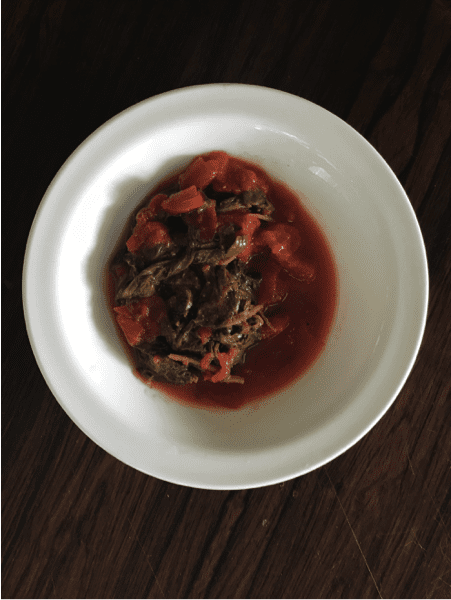



POV: 11:30AM. You just Zoomed out of a class called “Language, Music, and Dementia,” three things that you know very little about. You’re about to Zoom into a class called Language and Politics. Again, things you don’t understand. You ache for the familiar. You ache for tastes that remind of what it’s like to be in college. Vodka.
Fill a shaker with ice. You don’t need the shaker but I think it makes cocktails more of an event. Pour in vodka. I don’t know how much. “Pour until you’re bored” is what I say.
Add some lime juice. We had a bottle of the stuff in my fridge. Once again, just feel out the amount. Rachel Ray style. . .
**For this specific mule, I added a packet of Emergen-C 1000 mg of Vitamin C. “Super Orange” flavor. I do not want pneumonia.**




My mom comes down from her makeshift home office, I guess having smelled something burning coming from downstairs, and starts to laugh at my futile attempts at a grilled cheese. She tells me that our stove burners run hot. I’ll take that into consideration for next time.
On top of learning about our hot stove burners, I also learned how to get your mom to make you a grilled cheese sandwich: burn yours first.




My mother doesn’t believe in vegetarians because she thinks it’s ridiculous that people restrict themselves from eating delicious dishes just because there’s a little chicken.
Being a vegetarian at Duke was easy enough, but I lasted not even two days at home before I had to relinquish this title. I came home with the false belief that I could stay vegetarian, so I bought LOTS of tofu. However, I gravely overestimated the amount of tofu I could consume, so by Tuesday I found myself being stared down by a container of nearly-expired tofu.
I took this as a sign to cook a vegetarian meal for myself, however my hopes were quickly crushed when my mom came down and suggested that I cook dinner for the whole family. And then she suggested that I make a more substantial dish by using the ground turkey she found in the back of the fridge that was about to go bad.



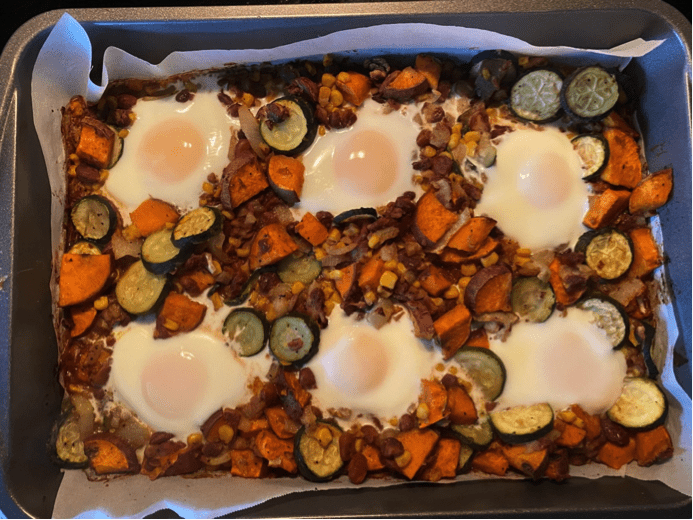
It’s 9 pm on Monday. After a day of pretending to work on my thesis, I felt bored for the first time since social isolation started. I sang karaoke to “Hips Don’t Lie” by Shakira and then played Dance Dance Revolution but didn’t fully overcome my boredom. So, I did what every other 20-something is doing in isolation right now—I made bread.
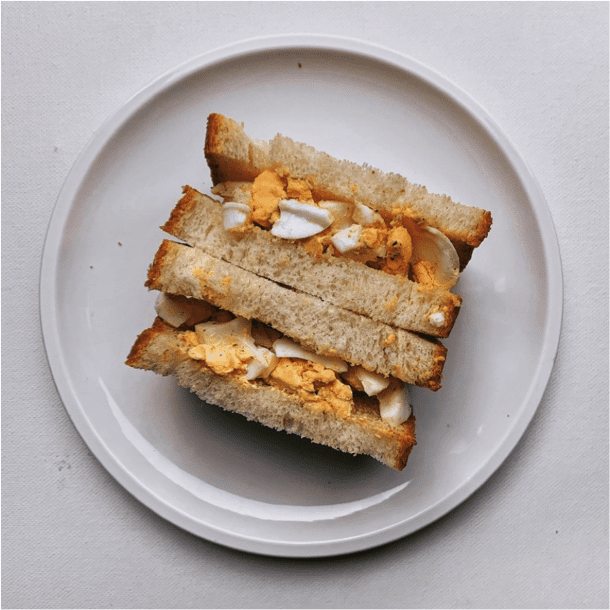



Growing up in Shanghai, cong you mian (Shanghai spring onion oil noodles) was something my grandma always made for lunch. The combined richness of soy sauce, sesame oil, and spring onions would travel through the hallways and into my room. It would always bring me off my feet to watch her cook in the kitchen.
After many years, the roles slowly reversed. As we transitioned from bumping elbows and fighting for a stovetop in our kitchen, this morning she stood next to me while I made our favorite noodles.
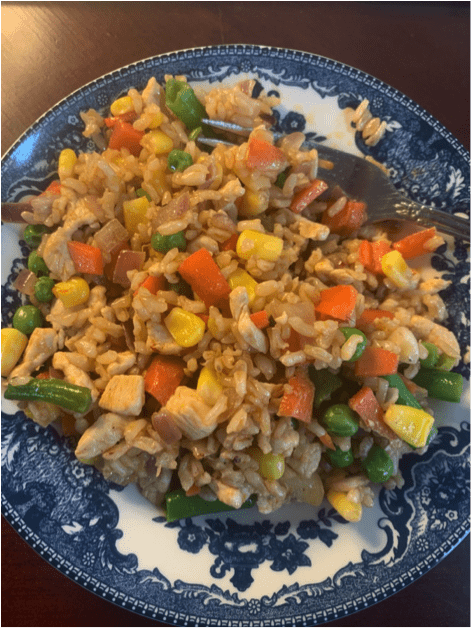

At this point I began panicking and imagining my product as a gloopy mess. I poured heaps of mochi flour into the batter mixtures, hoping to make a difference. It helped slightly, but the batter was still viscous enough to easily slide off a spoon. At this point I accepted defeat and let the oven do its work.
Amazingly, they turned out crispy on the outside and chewy on the inside. I could pick out the fragrance of the earl grey, the slight bitterness of the matcha, and the rich cocoa coffee combination, depending on which flavor I selected.
My dad ate three of them right out of the oven. Success!




This morning I reduced my PB&J supply to one compressed slice of toast, pasted with one teaspoon of peanut butter and grape jelly. For sure I would like to have more food with my coffee for breakfast, so I took out a half-ripe banana, pealed it, and wrapped it with the slim slice of PB&J.
The rolling process turned out not as easy as I had imagined. In short of the assistance of a classy bamboo sushi rolling mat, I almost convinced myself that I just made a vegetarian PB&J hotdog.



Along with any sort of breakfast at home, I find chai mandatory. It’s nice and warm to sip it in the mornings. However, I’m not much of an early riser in particular; moreover, attending class at night keeps me up anyways.
With nine hours of time difference, my schedule has reversed. Life in self-isolation has certainly made things interesting.




I swear, in the absence of other people cooking holiday foods, after I cooked these my entire neighborhood smelled; I went for a walk and inhaled the scent of our fried food from several blocks away. My gift to the hood!
In any event, over the years I have simplified the latke-making process by using my spiralizer to turn out the potatoes instead of grating them on a box grater (which always makes me nervous anyway), and, like my grandmother, I include some onion and garlic powder in the “batter.” These latkes turned out like gigantic French fries, which I discovered were *exactly* the things my quarantine life had been missing!